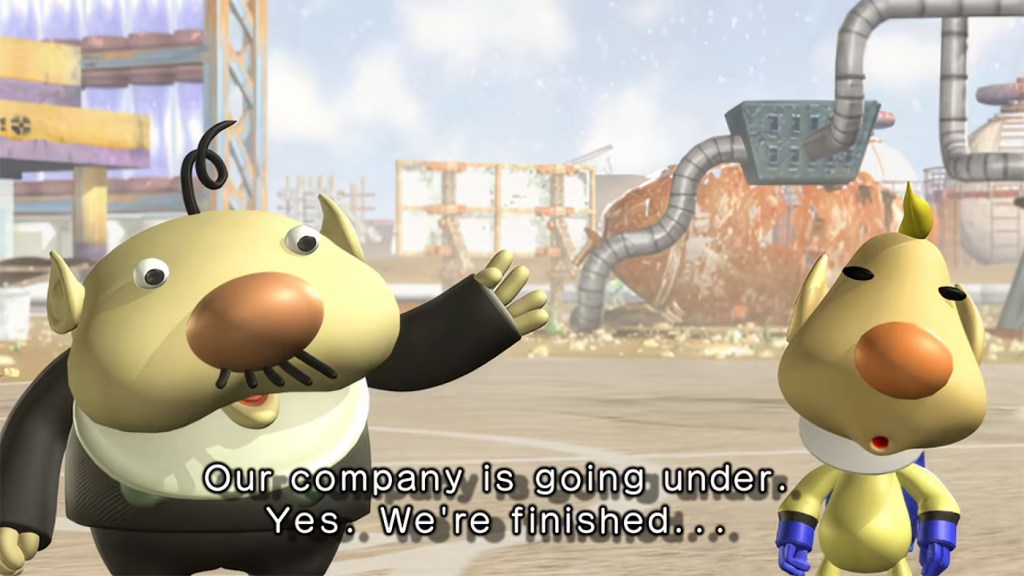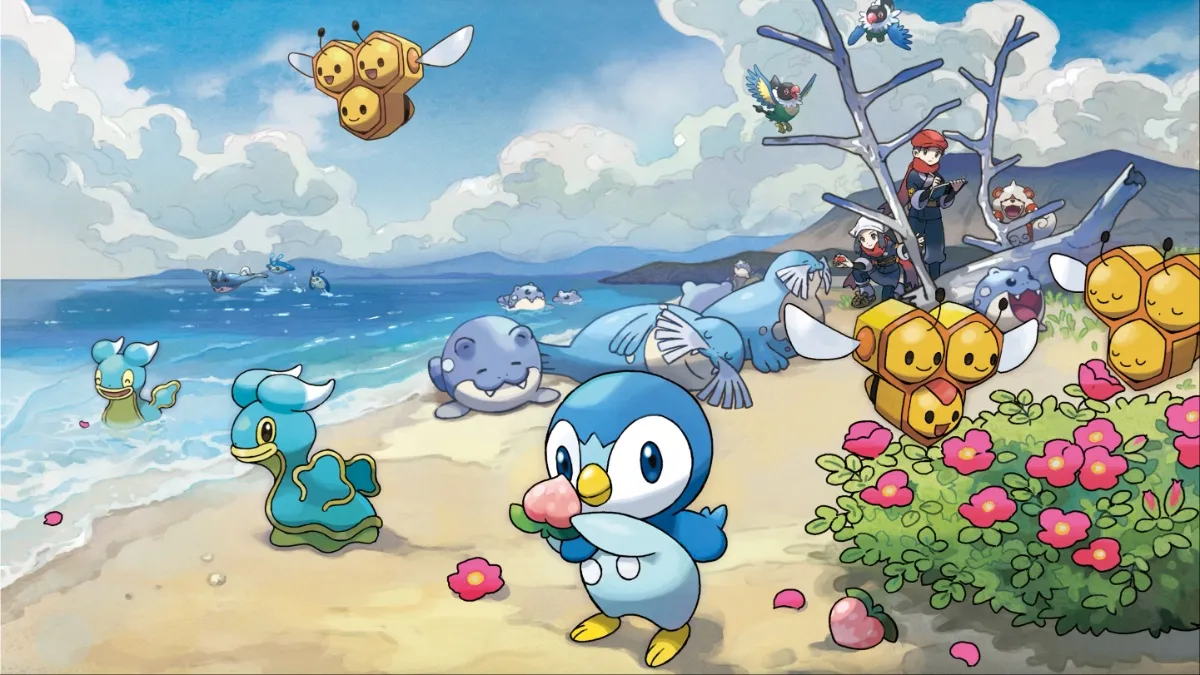When Pikmin released towards the end of 2001, it was able to worm its way into gamers’ hearts thanks to its mellow vibes and unique presentation. It was a strange new IP for Nintendo, a risky one at that since it was launching alongside a new console in a genre Nintendo isn’t well known for, but the risk paid off. It’s not the most financially lucrative Nintendo franchise, but the first game did well enough to justify the development of a sequel, Pikmin 2.
When the game was released in 2004, like the original game, I didn’t initially play it. I didn’t even know the game was out since, outside of Nintendo Power, there was no unique marketing tactic like with Luigi’s Mansion where the trailer was put into that game for players to watch at their leisure. But I eventually got the game for my birthday sometime in high school, and while I was excited to get it, it fell on my backlog. Something about the game bored me and I felt little desire to keep playing. Replaying the game now as an adult, I could tell right away why I dropped the game and how Pikmin 2 has become somewhat divisive over the years.
Like most sequels, Pikmin 2 offered up refinement from the first game. Several of the mechanics from the first game were expanded upon, such as the role of the three original Pikmin, giving some of them new properties, as well as the new Purple and White Pikmin and their unique abilities. However, I think Pikmin 2 opted to overcorrect what Nintendo deemed to be the first game’s flaws, despite those flaws being why some gamers, like myself, were endeared to the original Pikmin.
If there’s one area where the original Pikmin struggled, it was its length. The game could theoretically take only four-to-six hours to beat, maybe even less, making it a fairly breezy play. Its short length wasn’t really a weakness though. Thanks to the omnipresent timer counting down how long you had to escape Earth, players began to experiment with how quickly they could collect all of the parts they needed to beat the game or to see how many parts they could collect in a single in-game day. It became fun to speedrun Pikmin, and its short length never allowed the game to overstay its welcome.

However, Pikmin 2 treats the short length of the original as a problem to be fixed. That in-game timer had to be taken out as well to alleviate the stress that it presented towards players. Nintendo racked its brain to figure out how to kill two birds with one stone, and it came to a terrible answer that more people at The Escapist than just I find absolutely awful: Pikmin 2 decided to introduce caves.
I’ll be blunt — caves suck. They are a drag on the entire game and rob Pikmin 2 of virtually all of the charm and unique personality that the first game had. They systematically take all of the positive elements that made the first game stand out and streamline it to the point of tedium and boredom. It’s actually kind of impressive just how badly Nintendo missed the mark with the caves and how their intended function only serves to bring all of the problems that the franchise has had with gameplay to the forefront.
For context’s sake, instead of finding parts for your broken ship like in the first Pikmin, Pikmin 2 tasks you with finding treasure on Earth to sell to pay off your company debts. While you can find some of these treasures in environments similar to the ones found in Pikmin, with some of these locations almost shamelessly copied and pasted over from the first game, most of the best treasures in the games are found in caves. These subterranean catacombs can stretch for multiple floors and will often contain multiple different treasures and a big treasure guarded by a boss at the very bottom. Most of the floors of these caves are randomly generated, so there are some roguelike elements present in Pikmin 2’s design, in theory offering significantly more content than the original game.

The problem is that these caves offer absolutely no unique identity and personality. Unlike the bustling and lively worlds above, the caves are dark and dank. Most of them are difficult to distinguish between one another. Due to their being procedurally generated, there are few set pieces within them, causing them to blur together. They’re just boring to explore and feel like they never end. Of the 14 caves, some of them are quite short, lasting only two floors, but they can go up to 15 floors by the end of the game. At times they just drag down the pacing of a game that is meant to be brisk and light.
These caves are able to take such an eternity to complete due to Nintendo removing the timer when exploring. It’s still present when you’re above ground, but due to what the instruction manual calls “strong magnetic fields,” time is warped in these caves and time doesn’t actually pass. Despite that explanation making absolutely zero sense, the lack of a timer actually introduces several problems that grind the pace of the game to a halt. While above ground, the search for treasures is frantic since you’re fighting against the clock to get as many collectibles as possible. There’s not as much thematic tension to acquiring these goodies, but if you leave the treasure super close to your ship but don’t get it in, that’s another day you have to spend recollecting it.
Caves turn this into a slow and arduous process. Instead of the nerve-wracking tension of whether your Pikmin will be able to get a treasure to your ship before sunset, now it’s just a dull waiting game for them to bring the treasure back to your ship with little threat. The only real threat is that, if you lose all of your Pikmin at a lower level, you’re booted out of the cave and have to spend all that time going through another random set of areas again just to pick up where you left off.

But then you start to realize that, the longer you spend in the caves, the more of an endurance match they become. You can’t grow new Pikmin in a cave, so you’re only allowed to bring with you a maximum of 100 Pikmin and use only those 100 Pikmin to overcome whatever challenge the game throws at you. While some could argue that this is elevating the challenge of the game, I would instead argue that it’s more akin to trial-and-error repetition and offers very little strategy. You’re just surviving and engaging in combat encounter after combat encounter. Where’s the strategy there?
Consider a moment what the core of the first game was. You had to think about how to maximize your day and plan it effectively. With the caves, there really isn’t any way to plan your descent since you’re going in blind. You could come across a cave that is partially submerged that requires a lot of Blue Pikmin, but you won’t know that until you land inside. Plus, with the randomized nature of caves, there’s little to actually plan for since there are hardly any puzzles. If you leave the cave, that overabundance of water may not even be there next time. They can offer you challenging boss fights, but if you get destroyed by a boss the second they appear, which did happen to me in this most recent playthrough, then you can either reload your save or start the cave over from the very beginning. Sometimes it may even be impossible to defeat the boss if you’re that bruised up, so guess what you have to do again if that happens?
By the time the credits rolled, I had to ask myself: What positive additions did the caves bring to Pikmin 2’s design? It’s more content and it bumps up the game’s length, but at the cost of the charm that was there in the first game. Most of the game no longer takes place in these quaint approximations of Earth. They now center on dark, repetitive, and dull dungeons with little variation and borderline-unfair situations you can be thrust into. There are elements of refinement here, but they’re buried under floors upon floors of the most underwhelming level design in series history. I know that Pikmin 4 will include caves to some extent. I just hope that Nintendo learned from its mistakes in the 19 years since caves were introduced.





